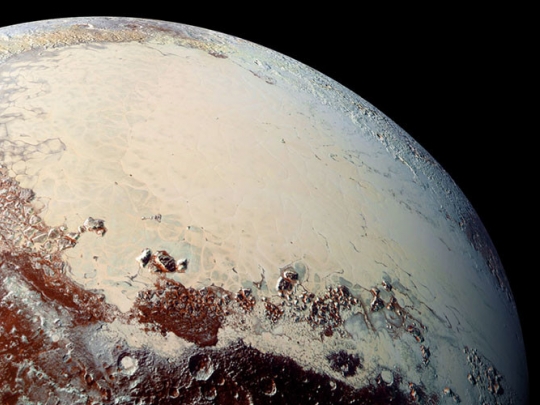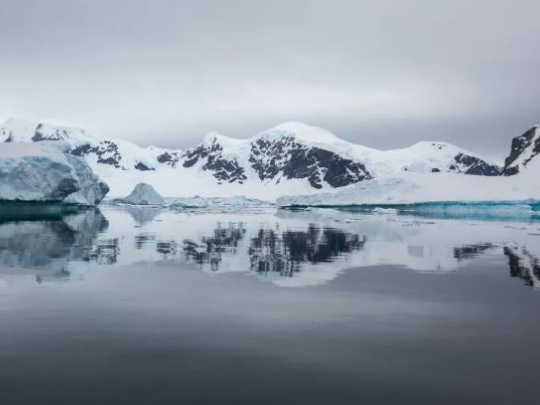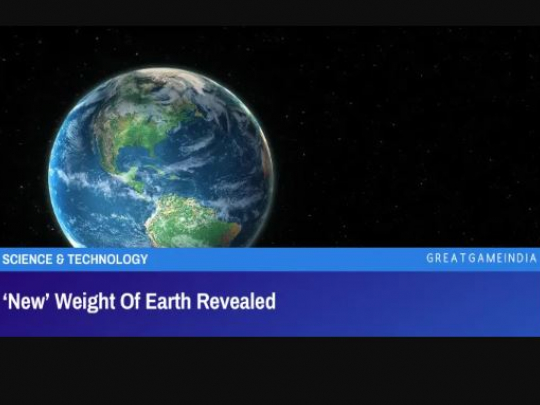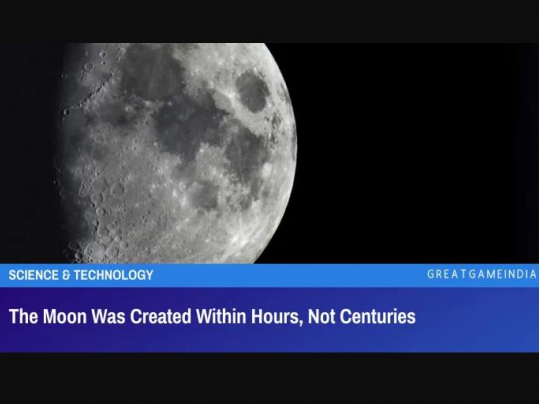Scientists reveal how Pluto got its mysterious love heart

A year after NASA’s New Horizon spacecraft captured a stunning image of a heart on the surface of Pluto scientists can reveal what caused the symbol of love to appear plastered across the dwarf planet.
A new study published in Nature appears to solve the mystery of how the heart-shaped nitrogen glacier known as the Sputnik Planum, located in the Tombaugh Regio region, was formed on the planet and debunks previous theories surrounding its origins.
French scientists used data and observations collected during the New Horizons flyby last year to create a computer simulation of Pluto’s atmospheric development over the last 50,000 years.
The simulation distributed nitrogen, carbon monoxide, and methane ices a few millimeters thick across the planet and allowed the scientists to look at different "climate" scenarios that could explain Pluto’s ice distribution.
Their findings dismisses earlier suspicions that the large size of the heart shape was due to a vast internal reservoir of nitrogen ice somewhere beneath Pluto’s surface.
“Pluto's surface is an amazing cocktail of different types of ice that do not exist naturally on Earth: nitrogen, methane and carbon monoxide,” according to lead author Tanguy Bertrand of Universite Pierre et Marie Curie, France who told ResearchGate that the answer to what caused the heart shaped glacier lies in Pluto’s climate.
“We discovered that the heart shape is to a large degree created by highly volatile nitrogen ice that unavoidably accumulates in the basin and forms a permanent reservoir of ice, as observed by New Horizons,” he said.
“This happens because of nitrogen’s solid-gas equilibrium. At the bottom of the basin the pressure of the atmosphere - and therefore of gaseous nitrogen - is higher, thus the frost temperature is higher than the outside.
As a result, nitrogen prefers to condense into ice there. Carbon monoxide ice, which is similarly volatile to nitrogen, was also found in be entirely sequestered with nitrogen in the basin,” he added.
The researchers also used the model to forecast what will happen to Pluto’s ice in the near future, predicting that atmospheric pressure is currently at its seasonal peak and will fall over the next few decades, while seasonal methane frosts will disappear.
For the record, one year on Pluto is the equivalent of 248 Earth years so these changes aren’t imminent and do not mean the end of romance for planet Pluto.
In an exciting turn of events, however, scientists expect the heart to develop a heartbeat of sorts.
“The half heart glacier lying inside is a really massive glacier, which is not impacted by the seasonal changes. It probably formed when the basin formed, and will remain there in the future,” Bertrand told Gizmodo.
“However, it probably flows and retracts over a few hundreds of kilometers (like a heart beating) with time, eroding and shaping the mountains surrounding it.”
- Source : RT















